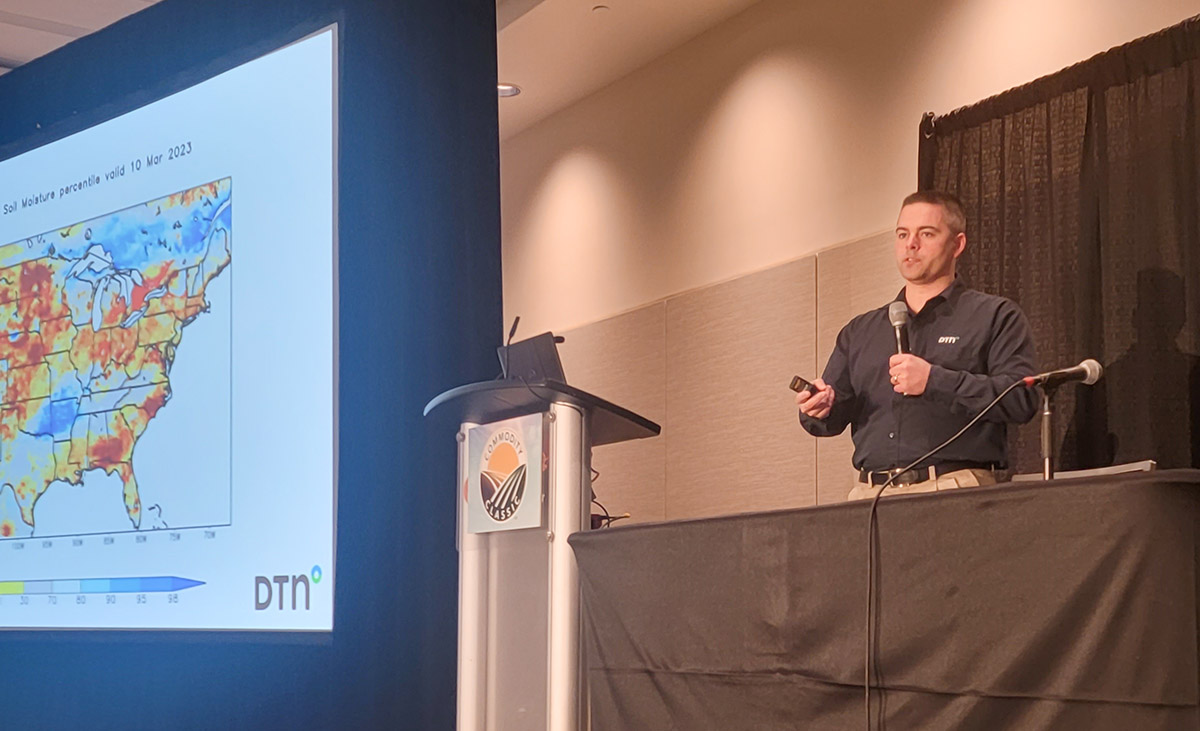
(Photo: Iowa Soybean Association)
Bye, Bye La Nina
March 23, 2023 | Kriss Nelson
The weather we have become accustomed to these past few years could change as the weather shifts from La Nina to El Nino.
John Baranick, DTN meteorologist, shared his insights on what this change in weather patterns could mean for the 2023 crop year during the Commodity Classic event held in Orlando, Florida.
“We have had very steady La Nina conditions since August 2020, but we are officially out of La Nina and now into neutral conditions,” he says.
American climate models show El Nino will most likely appear later this summer. What does that mean for the 2023 growing season?
“We have confidence we will see big differences in our weather than what we have seen over the last couple of years,” he says.
However, the question remains: When will El Nino weather officially affect us?
“Even if we get into El Nino this summer, the atmosphere lags a bit,” he says. “I don’t think it is really going to be a factor until fall or wintertime.”

Spring
Baranick says we can expect colder bursts of weather through March and April as La Nina makes its official exit.
“It takes a long time for the atmosphere to respond to changing weather in the Pacific,” he says. “Even though we are out of La Nina, we are still going to be influenced by its effects.”
Drought remains an issue this spring, but some improvement could be made in March. Farmers may also want to plan for delayed planting due to cool conditions.
Summer
When comparing models, Baranick says 2023 resembles 2009 at this point.
“It was a very cool summer across much of the U.S., outside of Texas,” he says. “This is a general pattern we see coming out of La Nina going into a weak El Nino.”
As far as summer precipitation, Baranick says there will be winners and losers.
“Those west of the Mississippi have struggled the last few years. This is a better situation for you,” he says. “We may not get rid of the drought completely, but the good news is El Nino occurring in 2024 will be a better scenario.”
Fall
Although predicting weather six months out is nearly impossible, Baranick says analog models show a dryer signal for much of the Corn Belt, which is a positive for those harvest months.
South America
The soybean harvest went well for Brazil despite some wet conditions, and they are currently working on their second-crop corn planting.
“There have been some issues with Brazil planting their safrinha corn crop because it has been so wet,” says Baranick.
Argentina, however, continues to struggle with drought conditions.
“They have had very long stretches of heat over 100 degrees for five to 10 days in a row,” he says. “A lot of their soil moisture is way below normal and, sometimes, record low.”
Not only is the Argentine crop facing drought conditions, but they also suffered frost last month.
“Argentina is as far south of the equator as Oklahoma is north. This frost that occurred in mid-February is like a frost occurring in Oklahoma in mid-August,” he says. “I didn’t think it was possible. Absolute dismal weather continues to cut production out of that country.”
Back